#70s shonen ai manga
Text
I address those who have read "Agnus Dei" or "Kami no Kohitsuji", "Kaze to Ki no Uta" 's spin-off. Could you tell me who these people are, please?
I think the two boys look like Serge and Pascal, but I'm not sure... and about the girl?

#year 24 group#shounen ai#kaze to ki no uta#shonen ai#shounen ai manga#gilbert cocteau#boy's love#gilbertcocteau#takemiya keiko#gilserge#serge x gilbert#kaze to ki no uta gilbert#sergebattour#sergexgilbert#kaze to ki no uta serge#serge#pascal biquet#agnus dei#kami no kohitsuji#keikotakemiya#keiko takemiya#takemiyakeiko#70s shounen ai manga#70s shounen ai#70s shonen ai manga#70s shonen ai#shonen ai manga#serge battour#gilbert x serge#gilbertxserge
29 notes
·
View notes
Text
Bohemian Rhapsody by Queen 👑
Kaze to ki no uta edit 🍃✨️
Definitivamente, de mis mejores edits. ¡Gracias por apoyo!
#kaze to ki no uta#le poeme du vent et les arbres#manga#shonen ai#year 24 group#la balada del viento y los árboles#gilbert cocteau#boy's love#kaze to ki no uta gilbert#the poem of the wind and the trees#serge battour#the song of wind and trees#the song of the wind and the trees#the poem of winds and trees#kaze to ki no uta edit#bohemian rhapsody#edit anime#70s shonen ai manga
4 notes
·
View notes
Text

#from the art book passé composé#Keiko Takemiya#illustration#shojo#shonen ai#70s manga#vintage manga#fairy
212 notes
·
View notes
Text









𝒯𝒽𝑜𝓂𝒶𝓈 𝒲𝑒𝓇𝓃𝑒𝓇 𝑀𝑜𝑜𝒹𝒷𝑜𝒶𝓇𝒹
#moto hagio#the heart of thomas#thomas no shinzō#heart of thomas#トーマの心臓#thomas no shinzou#year 24 group#thomas werner#shojo manga#shonen ai#yaoi#yaoi bl#bl manga#70s manga#old manga#yaoi manga#moodboard#moodboard aesthetic#anime layouts#tumblr layouts#anime moodboard#aesthetic moodboard#aesthetics
12 notes
·
View notes
Text
I keep thinking about this one splash page which the fantranslators of the Kaze To Ki No Uta translation I read would have inserted at the beginnings of volumes.
Kaze To Ki No Uta is a manga which I could best compare to being stabbed in the chest repeatedly by Aubrey Beardslay and Thomas Mann while being yelled at and degraded for eight volumes or so. It's not "literary-pornographic", so much as "literary-obscene". It's effect is similar to the Marquis de Sade, in how Sade wrote his pornographic works to be so completely monomaniacally perverse, so obsessively, compulsively so, and so deeply immersed in the farthest, most homicidal forms of perversion that nobody at all could read his works as scintillating, and yet the people who translated Kaze To Ki No Uta thought of it as this:

This is the kind of manga which should be guarded by men with guns from the average hentai or fujoshi, and yet here we are.
#kaze to ki no uta#shoujo manga#year 24 group#keiko takemiya#shonen ai#This manga got me to watch Den'in Ni Shisu and Death in Venice#which I'm glad for.#I love media that I could never recommend to someone else in good conscience.#I should sit down and read Thomas Mann#sometime.#A long time ago I dubbed this aesthetic “Embarrassing Kei”#in relation to how Yoko Taro uses it. Embarrassing Kei is my favorite.#We're allowed to enjoy things postironically#Thank you Miura-chan for making me read viscerally upsetting 70's shoujo.
33 notes
·
View notes
Text
A Quick History of BL
As someone who wrote a thesis on this very subject a few years ago, here is the short version of how BL has evolved throughout the years. For the new comers ❤
a minute of silence for the original form of this post that tumblr decied to not save right after I saved it
I am going to go with a chronological approach. Unfortunately, I cannot put everything in one post so if there’s any questions about this or that aspect of the history of BL that you want to know and it’s not talked about here, you are welcome to ask me directly :)
Context and influences - Japan in the 60′s
Before the US forced Japan to open its borders to the outside world in the 1800s, homosexual practices were common place between budist monks, samurais and kabuki actors. During the Edo period (1600s to 1800s) there was a very rich amount of poetry, art, books (such as Nanshoku Okagami (The Great Mirror of Male Love) by Ihara Saikaku) and codes of conduct about how to have a good master/aprentice relationship, kinda like the greeks if you know what I mean. However, with the arrival of western influences, in order to become a more “civilized” country, it was all put in the closet.
Yet, in the 60′s Japan started to pick it up again through literature about young androginous beautiful boys (aka bishounen). On one hand, in 1961, the novel Koibitotachi no Mori (A Lover’s Forest) by Mari Mori was published. It tells the story of a young and beautiful 19 year old worker and a half french half japanese aristocrat, and their tragic romance. On the other hand, Taruho Inagaki wrote Shounen ai no Bigaku (The esthetics of boy-love), an essay on aesthetic eroticism (of which he wrote a lot of). All this was know as Tanbi (lit. aesthetic) literature. It generally refered to literature with implied homosexuality and homoeroticism such as works by Oscar Wilde, Jean Cocteau, etc. And of course, Mori and Inagaki.
In chinese tanbi is read as danmei (term used to refer to BL novels in china today, ie: The Untamed it’s all connected friends).
From the birth of Shonen Ai to Yaoi - 70′s to the late 80′s
Around the beginning of the 70′s, shoujo was being revolutionized by the Year 24 Group, a generation of women manga authors (mangaka) who started to explore new themes. Among them, their interest in tanbi gave birth to a new subgenre: Shounen ai.
Their most known manga were:
Kaze to Ki no Uta (The Ballad of the Wind and Trees) by Keiko Takemiya, and
Toma no Shinzo (The Heart of Thomas) by Moto Hagio
Their stories are characterized by having suffering eurpoean bishounen in boarding schools, living an idealized perfect love (meaning passionate) that, despite the tragic end of one of them, lives forever in the other.
As this genre starts getting popular, more and more fans of these stories start making their own self published manga, aka doujinshi, of the genre. It is around this time that the term Yaoi is coined. Meaning “YAma nashi, Ochi nashi, Imi nashi” (no climax, no fall, no meaning). Basically PWP fanfiction, for the most part. Doujinshis could be considered an equivalent of fanfiction in manga form. It is also here that the term Fujoshi (aka Rotten Girl, for liking rotten things) starts being used to refer to women readers of yaoi.
With this rise in popularity come the start of the commercialization of the genre. Which meant the publication of magazines dedicated solely to yaoi/shonen ai/BL. The most popular yaoi manga magazine at the time was June. The common trait of their stories being the therapeutic power of the love between the mains. The traumatized character would heal throught this newfound love.
Most of the stories at this time happened in the West (Europe or the States) as the exploration of these dark themes intertwined with homosexual romance and homoeroticism still feel safer to explore as a foreign concept. One example would be Banana Fish (1985).
Commercialization and Yaoi Ronso - 90′s
As more publishing houses pick the genre up, the term Boys Love is used to include every type of manga about homosexuality made for women.
The increasing amount of BL series sees a changes in its themes:
the start of the “gay for you” trope where one mantains their heterosexuality despite being in a homsexual relationship,
the uke/seme dynamic (mirroring hetero realtionships) also relating to physical appearence (one being more feminine, the other being more masculine),
the use of rape as an act love (sexual violence has always been present but here it becomes a staple),
anal sex as the only type of sex,
older and more masculine men start to appear
they now happen in Japan
Good examples of the presence of these themes in manga are Gravitation (1996) or Yatteranneeze (1995).
However in 1992, Masaki Sato (a gay activist/drag queen) wrote a letter in a small scale feminist magazine attacking yaoi and pointing out how it “represented a kind of misappropriation or distortion of gay life that impacted negatively upon Japanese gay men”. The female readers of yaoi responded, defending the genre as a means to escape gender roles and explore sexual themes that was never meant to represent the realities of gay men. This is know as the Yaoi Ronso (Yaoi Debates).
The debate ended with both sides understanding more of each other, with mangakas starting to include queer views in their works. It also started the academic reasearch of BL.
Yet, it is a debate that has been restarted more than once, as it is still relevant despite the evolution of the genre.
more on this on another post
Globalization and coining of BL - 2000′s
By the beginning of the 2000s BL is being sold all over the world (like all manga), and has become a stable industry. We could say it has finally become it’s own genre.
Some of the most well known manga series, to us (in the west), of the time are:
Junjou Romantica 2002
Koi Suru Boukun 2004
Love Pistols 2004
Haru wo Daiteita 1999
all of these have anime adaptations for the curious ones
We also start seeing short anime adaptations or special episodes of the most popular series, with questionable themes, such as: adoptive father x adoptive son (Papa to Kiss in the Dark 2005), father x son’s friend (Kirepapa 2008), etc...
However the themes remain more or less the same. Junjou Romantica’s love story starts with a non-con sex scene by the older one (masc, seme) to the younger one (more feminine, uke) addressed years later in the manga btw. Koi Suru Boukun’s love story is triggered by aphrodisiacs and rape. They’re still very present in the stories but slowly going away. A mangaka that represents this era could be Natsume Isaku (Candy Color Paradox 2010).
Change is slow in Japan. Even though the voices of LGBT+ people started to be taken into account in the genre it is not until later that we see it reflect in the mangas themselves. However, we can already see the start of this in Doukyusei (Classmates) (2006) by Asumiko Nakamura. Also Kinou Nani Tabeta? (2007) which is actually part of a more mature genre: Seinen.
It is my personal (subjective) theory that the BL of this era was the one that got popular outside of Japan, which is why we see lots of references to the themes, tropes and dynamics of this time in today’s BL series.
The LGBTzation of BL and the rise of webtoons - 2010′s to 2020′s
Slowly but surely LGBT characters and themes enter the scene of BL. Existing simultaneously with the previous tropes and themes, we start seeing a shift in these stories. We now see:
characters that identify as gay or some type of queer
discussions about homophobia
more mature themes about life and romance
At the same time as we get the usual love stories with the usual themes, a new trend starts to take over. And we get simultaneously, cute, sometimes questionable but light love stories:
Love Stage 2010
Ashita wa Docchi da! 2011
Kieta Hatsukoi 2019
More profound stories and darker or more complex themes:
Blue Sky Complex 2013
Saezuru Tori wa Habatakanai 2011 (mafias)
Given 2013 (suicide)
Hidamari ga Kikoeru 2013 (deafness)
And others that adress the queer experience in a more mature way (which might actually fall into the Seinen genre)
Itoshi no Nekokke 2010 (slice of life, queer characters)
Smells like Green Spirit 2011 (two ways to deal with a homphobic society)
Strange 2014 (relationships between men)
Shimanami Tasogare 2015 (an LGBT group helps a closeted gay)
Old Fashioned Cupcake 2019 (you know this one 😉)
Bokura no Micro na Shuumatsu 2020 (the end of the world)
As queer stories are explored, BL mangakas and mangakas from other genres start to consider more stories about queer people such as the Josei Genderless Danshi ni Aisaretemasu (My Androgynous Boyfriend) (2018) by Tamekou, or the Shoujo Goukon ni Itarra Onna ga Inakatta Hanashi (The story of when I went to a mixer and there were no women) (2021) by Nana Aokawa.
Still, we can see two realities live side by side. Doukyuusei gets adapted into an impactful animated movie in 2016, meanwhile Banana Fish gets an anime adaptation that keeps the homoeroticism but not the homosexuality.
For those who might be interested. Here are some of the authors that represent the first half of this era, where they start to include newer points of view:
Scarlet Beriko, HAYAKAWA Nojiko, KURAHASHI Tomo, OGERETSU Tanaka, Harada, KII Kanna (Stranger by the Sea), etc...
And authors that while keeping classical themes break the stereotypes in a subtle manner:
CTK, ZAKK, Jyanome, Cocomi, Hidebu Takahashi, SUZUMARU Minta, etc...
Mangakas also no longer stick to one genre only. They explore whichever of them they want, from BL to Seinen to others.
ie: Tamekou,
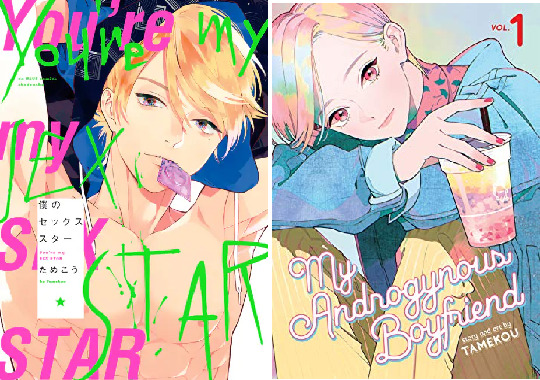
or Asumiko Nakamura

The curious case of Webtoons
With the digitalization of mangas, throught Renta and Lehzin, it has become easier (and more expensive) to access these stories. Korea makes and appearence with their webtoons. Through the lack of piracy protections and the majority of them being digital, manhwa (korean webtoons) sees a rise in popularity. Through the digital medium the influencee can be the influencer.
However, like many other East Asian countries they have consumed BL, without hearing about the conversations about BL. So they end up mantaining the older themes and stereotypes that newer BL is trying to leave behind. Therefore, we end up with a mix of old and new, ie:
Killing Stalking 2016
Cherry Blossoms After Winter 2017
Painter of The Night 2019
Additionally, it is also thanks to the easy access to internet that Omegaverse, with its higher dramatic stakes (that parallel hetero dynamics), enters the mangasphere in 2016. It has grown in popularity ever since.
With the Thai BL Boom of 2020, Japan rediscovers its own BL market and starts investing in it more. Which is why we get live action adaptations of BL manga that was popular years ago (Candy Color Paradox was a manga from 2010), the more recent ones (The End of the World With You) or new anime adaptations (Saezuru Tori wa Habatakanai in 2020).
more on this in my japanese live action BL post
What has it become now? is it BL? ML? or Seinen? Or is it all just gay manga?
It is clear that Shoujo manga (with BL, Josei and Seinen) is exploring queer themes such as gender and sexuality more and more. Japan is interested in this conversation, not only in manga (Genderless fashion). Which brings up the current question in BL studies: Does it make sense to keep these categories?
As a response to BL, ML (Male Love), which is made by gay men for gay men, started happening (around the 70s too). And Bara (gay manga porn) in response to Yaoi. However both gay men and women read BL and ML. We also see other themes being explored through BL, such as friendship (in BL Metamorphose), food (in Kinou Nani Tabeta), male relationships of all kinds (in Strange), and different queer views on life and its challenges (in Shimanami Tasogare). More and more what is LGBT and what is BL is merging, the line is blurred.
Conclusion
BL has been in my life for longer than it hasn't. It is through shoujo and BL that I have come to understand people and romance.
It is flawed, like everything else this life, but it's flourishing in many ways.
The genre feels old and new at the same time.
We can still find shounen ai/tanbi elements in more modern manga (All About J). Or the gay for you in a new light (Itoshi no Nekkoke). Or more educational manga on queer issues (My Brother’s Husband by Gengoroh Tagame). BL has around 50 years of existence but it is also being born anew in Thailand and Korea.
BL manga will continue to evolve in acordance to Japanese tastes, as it is still a local market. Hopefully the korean webtoons that get popular will be the more daring ones in their themes. Who knows where it will go from here? The only thing we know for sure is that it will continue to change. Isn't it exciting?
A post on the evolution of live action BL in Japan is coming, to complement this post. As well as a more detailed explanation of the Yaoi Debates and gay manga.
#history of bl#bl post series#I feel like I left too much stuff out#I hope it makes sense#honestly I would really recommend reading some of those manga#they're super interesting#soon it'll be 20 years since I started reading BL#my gosh#if theres anything anyone wants to know more about#I'd love to write more :)#yaoi manga#bl manga
714 notes
·
View notes
Photo






Gilbert Cocteau & Björn Andrésen
#kaze to ki no uta#kazetokinouta#Kazeki#la balada del viento y los ?rboles#la balada del viento y los árboles#la balada del viento y los arboles#the poem of the wind and the trees#the poem of the wind and trees#the poem of wind and trees#takemiya keiko#keiko takemiya#bjorn andresen#Death in Venice#manga#Vintage Anime#best of 70s 80s 90s#70s manga#80s anime#anime yaoi#shonen ai
470 notes
·
View notes
Text


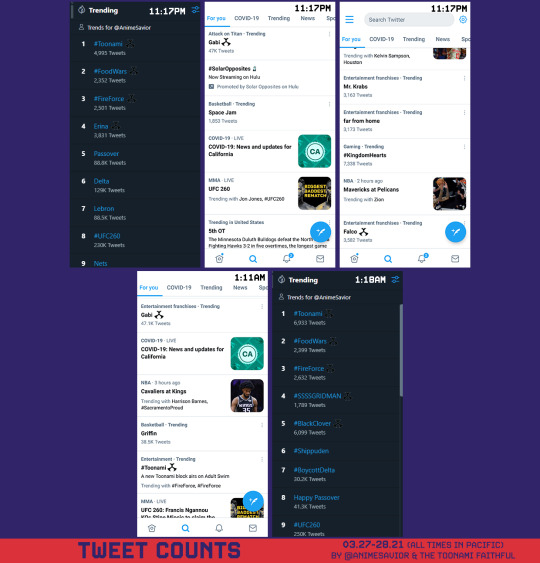


“My power is not to destroy. My power is to mend this world. With its creator. With Akane Shinjo.”
- Gridman, SSSS.Gridman (Ep. 12)
This Toonami Trending Rundown is a double-feature for the nights of March 27-28, 2021 and April 3-4, 2021. During this fortnight, we commemorated the final two episodes of SSSS.Gridman.
For the night of March 27-28, Toonami trended in the United States alongside Food Wars, Fire Force, SSSS.Gridman, and Naruto Shippuden. Character trends were also spotted with both Gabi and Falco from Attack on Titan, and Erina from Food Wars. Meanwhile for the night of April 3-4, Toonami trended in the United States alongside Food Wars (including another character trend of Erina), Fire Force, and SSSS.Gridman. #Toonami also trended on Tumblr. The full list, including statistics and tweet counts from the Twitter app and Amr Rahmy’s Fan Screening analytics app, can be seen below.

This likely won’t be the end for Gridman on Toonami, as Studio Trigger is already working on a sequel (albeit with a completely new cast) called SSSS.Dynazenon. The new series premiered on April 2, and is available for simulcast on FunimationNow. Whether Dynazenon will join Toonami as well is a question for the future, but watch this space for future developments.
Another sequel fans will be anticipating for the near future is the second season of MegaloBox, titled MegaloBox 2: Nomad. For those who want to check out the simulcast, it’s available for viewing on FunimationNow. We’ve yet to hear anything regarding production of the dub at this time. The first season premiered on Toonami on December 9, 2018, eight months after its Japanese premiere on April 6. If precedent is any indication, we could see season 2 air on Toonami at a similar timeframe, assuming everything goes well in negotiating. Of course, if you do want to see MegaloBox return to the block, as with SSSS.Dynazenon or any future show, send your show requests to Toonami’s Facebook page or by directly messaging Jason DeMarco on Twitter (@Clarknova1).
After four years and over 170 episodes, the Black Clover anime will be going on a hiatus to allow series creator Yūki Tabata to create more storyline in the manga. For the record, Toonami aired Episode 143 last week, meaning we have 27 episodes left to go in the season. On the 2021 17th issue of Weekly Shonen Jump released during AnimeJapan 2021 week, it was revealed that a Black Clover movie is in the works. Further details are to be revealed in a later date.
youtube
Following the Japanese broadcast and simulcast of Attack on Titan Episode 75 (Ep. 16 of Season 4), it has been announced that a second cour of Attack on Titan Final Season is in production. The season will resume with Episode 76 this winter. Toonami premiered the dub of Episode 70 this past Saturday (April 3), so we’ll have 4 more episodes before we reach the mid-season point.
Late at night following end of the April 3-4, 2021 broadcast of Toonami in the East Coast, Warner Bros. and Shueisha were hosting a JoJo’s Bizarre Adventure online event, titled the JoJo’s Bizarre Adventure the Animation Special Event ~JOESTAR the Inherited Soul~ in Japan. There, JoJo fans received the news that there will be an anime adaptation of Part 6,titled Stone Ocean. Jolyne Kujo, the protagonist of this arc, will be voiced by Ai Fairouz.
Aniplex and Bang Zoom! has released a new trailer for tonight’s premiere of The Promised Neverland season 2 and revealed some of the newest voice actors. Of note, the English Voice Direction and Adaptation is by Alex von David, taking over for Chris Cason.
Emma – Erica Mendez
Ray – Laura Stahl
Don – Cedric Williams
Gilda – Ryan Bartley
Nat – Michelle Ruff
Anna/Alicia – Brianna Knickerbocker
Thoma/Yvette – Cristina Vee
Dominic/Christie – Janice Kawaye
Lannion – Philece Sampler
Mark – Erika Harlacher
Phil – Amber Connor
Rossi/Barbara – Allegra Clark
Jemima – Kimberly Anne Campbell
Sonju – Daman Mills
Mujika – Lizzie Freeman
Vincent/Zazie – Jalen K. Cassell
Cislo – Mark Whitten
Vylk – Jake Eberle
Peter Ratri – Crispin Freeman
youtube
Finally, Toonami and Funimation have officially revealed that My Hero Academia will rejoin the lineup for Season 5 beginning on May 8 at 12:30 a.m. Eastern/Pacific. MHA will replace Attack on Titan on the lineup once the latter show goes on its mid-season break. In the meantime, Toonami will be broadcasting an encore run of Season 4 beginning on May 8 at 4:00 a.m.
Tune in tonight for the season 2 premiere of The Promised Neverland, among other great moments. Until next week, stay safe, be sure to visit blacklivesmatters.carrd.co and anti-asianviolenceresources.carrd.co to see what you can do to help the fight against racial inequality, and continue to do your part to stop the spread of COVID-19 and protect others by following your local health advisories. Stay at home unless essential purposes require you to go out, practice social distancing by staying six feet/two meters away from one another if possible, and wash your hands thoroughly for at least 20 seconds.
Legend: The shows listed are ordered based on their appearance on the schedule. Show trends are listed in bold. The number next to the listed trend represents the highest it trended on the list (not counting the promoted trend), judging only by the images placed in the rundown. For the Twitter tweet counts, the listed number of tweets are also sorely based on the highest number shown based on the images on the rundown.
March 27-28, 2021 Trends
United States Trends:
#Toonami [#3]
#FoodWars [#12]
Erina (From Food Wars) [#26]
#FireForce [#28]
#SSSSGridman [#29]
#Shippuden [Trended with #Toonami]
Tweet Counts:
#Toonami [6,933 tweets]
Gabi (From Attack on Titan) [47.1k tweets]
Falco (From Attack on Titan) [3,582 tweets]
#FoodWars [2,399 tweets]
Erina (From Food Wars) [3,831 tweets]
#FireForce [2,632 tweets]
#BlackClover [6,099 tweets]
Notes and Other Statistics:
#Toonami: @WhoTrendedIT reported that @JessicaCalvello and @blumspew are responsible for the show trending in the United States.
April 3-4, 2021 Tweets
United States Trends:
#Toonami [#7]
#FoodWars [Trended with #Toonami]
Erina (From Food Wars) [#28]
#FireForce [Trended with #Toonami]
#SSSSGridman [Trended with #Toonami]
Tweet Counts:
#Toonami [5,880 tweets]
Erina (From Food Wars) [3,934 tweets]
Tumblr Trends:
#Toonami
Notes and Other Statistics:
#Toonami: @WhoTrendedIT reported that @JessicaCalvello and @blumspew are responsible for the show trending in the United States.
Special thanks to @sdurso5, @TarkatanBauty, and others I forgot to mention for spotting some of the trends on this list.
Only Toonami on [adult swim] on Cartoon Network.
#Toonami#Adult Swim#Cartoon Network#Toonami Trending Rundown#SSSS.Gridman#Attack on Titan#Shingeki no Kyojin#Falco#Gabi#Food Wars#Shokugeki no Soma#Erina#Fire Force#Naruto#Naruto Shippuden
5 notes
·
View notes
Text
Gilserge❤️

Serge Battour and Gilbert Cocteau from the manga "Kaze to Ki no Uta" or "The Song of the Wind and the Trees" (1987)
#shounen ai#shounen ai manga#boy's love#year 24 group#gay boys#kaze to ki no uta#gilbert cocteau#gilbertcocteau#shonen ai#serge x gilbert#gilserge#kaze to ki no uta gilbert#serge battour#sergebattour#sergexgilbert#serge#gayboy#70s shounen ai manga#70s shounen ai#70s shonen ai manga#70s shonen ai#shonen ai manga#takemiya keiko#takemiyakeiko#keikotakemiya#keiko takemiya#keiko takemiya manga#kazetokinouta#kaze to ki#kazeki
35 notes
·
View notes
Text
Manga: Thomas no Shinzō by Moto Hagio ✨❤️🩹
Song: Your Best American Girl by Mitski 🌟🌛
Sentí que les quedaba, que TNS es una Mitski referencia con todo.
#shonen ai#year 24 group#boy's love#moto hagio#thomas no shinzou#heart of thomas#thomas no shinzo#the heart of thomas#70s shonen ai manga#manga#mitski#julusmole bayhan#eric fruheling#il cuore di thomas#thomas werner#your best american girl
5 notes
·
View notes
Text

#Keiko Takemiya#illustration#shojo#shonen ai#70s manga#vintage manga#kaze to ki no uta#gilbert cocteau
81 notes
·
View notes
Text

Oskar's alcoholism is greatly underestimated….
How did he drink a bottle of ethyl alcohol??! 😨😨
#shojo manga#shonen ai#the heart of thomas#thomas no shinzō#yaoi#heart of thomas#yaoi bl#トーマの心臓#thomas no shinzou#oskar reiser#oscar reiser#bl manga#70s manga#yaoi manga#old manga#retro shojo#moto hagio#year 24 group#retro manga#hagio moto
13 notes
·
View notes
Text
J-POP Manga, tutti gli annunci per il 15° anniversario della casa editrice
Fra i titoli in arrivo nei prossimi mesi ci sono 86, Shadows House, Kusuriya no Hitorigoto e il webtoon BJ Alex!

J-POP Manga festeggia i suoi primi 15 anni debuttando su Twitch, la nuova casa digitale di Edizioni BD e J-POP Manga. Durante il corso della ”Quinceanera” Marco Schiavone, Georgia Cocchi Pontalti e Jacopo Costa Buranelli hanno fatto gli onori di casa, accogliendo amici e collaboratori della casa editrice e “regalando” a sorpresa 10 nuovi titoli che usciranno nel 2021.
MISSION: YOZAKURA FAMILY di Hitsuji Gondaira

Il nuovo shonen targato Shueisha! Taiyo Asano è uno studente liceale molto timido e l'unica persona con cui riesce a parlare è la sua amica d'infanzia, Mutsumi Yozakura, la ragazza più popolare della scuola. Il rapporto tra i due procede normalmente fino al giorno in cui Taiyo scopre la verità sulla famiglia di Mutsumi. La casata Yozakura è infatti una famiglia composta dalle migliori spie del mondo! Senza contare che il capo famiglia, il fratello maggiore Kyoichiro, ha sviluppato un ossessivo istinto protettivo nei confronti della sorella e considera il ragazzo come una minaccia per l’incolumità di Mutsumi. Fin dove si spingerà Taiyo per salvare la sua migliore amica dalle folli missioni che la sua famiglia svolge quotidianamente?! Azione adrenalinica, commedia familiare e molto altro: la missione ha inizio!
6 volumi - In corso - Uscita prevista: autunno
86 – EIGHTY-SIX di Asato Asato e Motoki Yoshihara
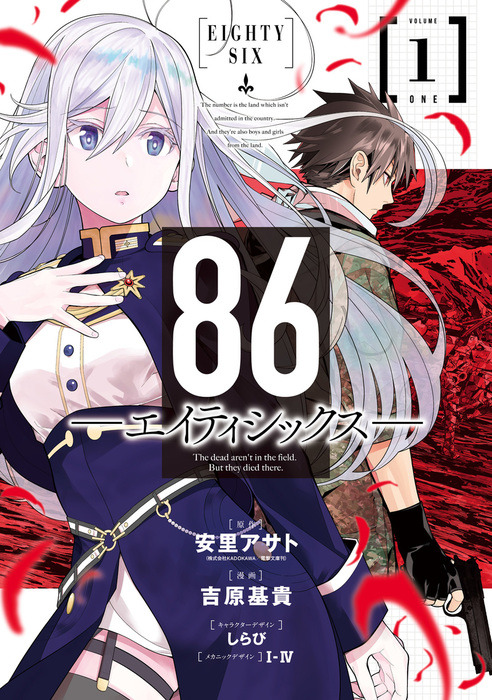
La Repubblica di San Magnolia è una nazione unita sotto una bandiera dai cinque colori, con un governo solido e dedito al mantenimento del benessere dei suoi orgogliosi cittadini. Da 9 anni questo paese è in guerra con il suo vicino, l'Impero Giad, che dispone di un’avanzata tecnologia bellica consistente in una serie di droidi militari auto-guidati chiamati Legion. In risposta alla minaccia, la Repubblica innalza un muro difensivo attorno ai suoi 85 distretti e respinge l'attacco nemico utilizzando i Juggernaut, comandati a distanza dagli Handler, strateghi militari localizzati nel centro di comando della capitale. Ufficialmente la Repubblica ottiene vittorie senza perdite ma la verità è ben diversa... ogni Juggernaut è infatti pilotato dai cittadini abbandonati nell’86esimo distretto: i Colorata, una minoranza discriminata e perseguitata dal governo in mano alla maggioranza Alba. Abbandonati fuori dalle mura e obbligati a battersi per la difesa della Repubblica che non li considera neanche umani, Shin “The Undertaker” e i suoi compagni d’arme dovranno affidarsi alla guida della giovane Handler, Lena Milìzé, appartenente ad una casata nobiliare degli Alba. Riusciranno i due comandanti a cambiare le sorti della guerra e a far cessare le discriminazioni del governo di San Magnolia?!
2 volumi - In corso - Uscita prevista: maggio
PORNOGRAPHIC PICTURES di Osamu Tezuka

Uno dei manga autobiografici di Osamu Tezuka, sullo sfondo della società giapponese dalla fine della seconda guerra mondiale al suo dopoguerra. In questa raccolta sono raccontate le vicende di alcuni uomini di Osaka, devastata dopo il conflitto, che resistono imperterriti alla disperazione di quei giorni funesti. Un orfano in cerca di vendetta, un ladro di alimentari, un uomo d’affari che approfitta della crisi nazionale per fare soldi e molti altri. Lo stesso Tezuka si fa protagonista della sua opera attraverso il personaggio di Osamu Takatsuka.
Volume unico - Uscita prevista: estate
YAKEPPACHI NO MARIA di Osamu Tezuka

Yakeno Yahachi, un vivace ragazzino noto come "Yakeppachi" dà origine a una bella ragazza di nome Maria mentre è in trance; la sua personalità è identica a Yakeppachi. Maria in realtà, è l’ "ectoplasma" di Yakeppachi, una sostanza filamentosa e simile alla nebbia che viene generata dal mezzo spirituale durante una seduta spiritica, chiamata anche "corpo astrale". Prendendo la forma di una bambola donatale dal padre di Yakeno, Maria inizia ad andare a scuola con il ragazzo, portando caos e bizzarrie all’interno dell’istituto. Riusciranno i due a convivere e a superare la marea di problemi che la loro relazione causerà? Un bizzarro manga di educazione sessuale creato dal “Dio del Manga” appartenente al periodo dell’Ero Guru Nonsense (fine anni ‘60 e inizio anni ‘70), in cui gli autori di manga cominciavano ad abbattere i tabù dell’epoca per dimostrare una volta per tutte che il manga poteva dimostrarsi molto più che semplice fumetto per ragazzi.
Volume unico - Uscita prevista: estate
LE ROSE DI VERSAILLES EXTRA di Ryoko Ikeda

La mitica avventura di Oscar e degli altri protagonisti della Versailles di Riyoko Ikeda continua e si completa in questo nuovo indispensabile cofanetto della Lady Oscar Collection! Dopo aver concluso nel 1973 la saga portante, dal 1984 al 2018 la Ikeda è tornata in più occasioni a narrare nuove storie delle "Rose di Versailles", in una lunga sequenza di racconti che approfondiscono e proseguono le vicende della serie originale: "La Duchessa in nero", "Le Storie Gotiche" e gli "Episodes". Anche per questi splendidi extra arriva finalmente l'edizione definitiva, con pagine a colori, in Italia!
Box - Uscita prevista: estate
DAISY JEALOUSY di Ogeretsu Tanaka

Una nuova opera dalla Dea dello yaoi, Ogeretsu Tanaka (Yarichin Bitch Club, Neon Sing Amber, Escape Journey) che con il suo stile di disegno inconfondibile continua a esplorare le sfaccettature dell’amore, senza mai dimenticarsi una buona dose di erotismo. Misaki, che ama i videogiochi fin dall'infanzia, aspira a far parte della società Gold Games e per questa ragione si iscrive a una scuola di design. Lì incontra Kaname, talentuoso designer emergente, un rivale su cui vuole prevalere; la frustrazione generata dalla sua differenza di abilità cresce in Misaki fino a quando non esplode di gelosia... Kaname si sta solo prendendo gioco di Misaki o non percepisce i suoi veri sentimenti?
Volume unico - Uscita prevista: estate
KAORI NO KEISHOU – THE INHERITANCE OF AROMA di Hyuuga Natsu, Ikki Nanao e Nekokurage
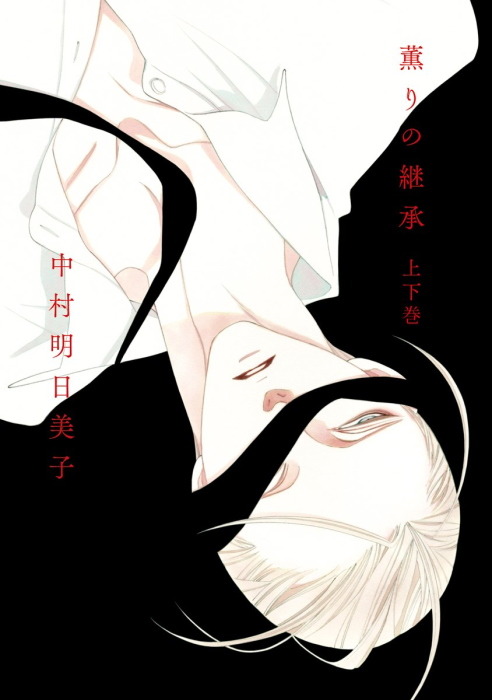
Maomao, ragazza addestrata dal padre nell'arte delle erbe medicinali, viene rapita e venduta come serva nel palazzo interno dell’Imperatore. Decisa a ogni costo a non farsi notare più del necessario, nasconde la sua intelligenza e le sue competenze, non riuscendo però a ingannare il capo eunuco Jinshi, che la osserva svelare la "maledizione" dietro alle misteriose morti dei neonati eredi imperiali. Viene così promossa ad assistente assaggiatore del cibo destinato alle nobili consorti dell'imperatore, e i suoi giorni tranquilli sono destinati a finire…
7 volumi - In corso - Uscita prevista: estate
KUSURIYA NO HITORIGOTO – THE PHARMACISTS’S MONOLOGUE di Hyuuga Natsu, Ikki Nanao e Nekokurage

Maomao, ragazza addestrata dal padre nell'arte delle erbe medicinali, viene rapita e venduta come serva nel palazzo interno dell’Imperatore. Decisa a ogni costo a non farsi notare più del necessario, nasconde la sua intelligenza e le sue competenze, non riuscendo però a ingannare il capo eunuco Jinshi, che la osserva svelare la "maledizione" dietro alle misteriose morti dei neonati eredi imperiali. Viene così promossa ad assistente assaggiatore del cibo destinato alle nobili consorti dell'imperatore, e i suoi giorni tranquilli sono destinati a finire…
7 volumi - In corso - Uscita prevista: estate
SHADOWS HOUSE di Somato

Emilico è una giovane e allegra bambola vivente, assistente personale della nobile Kate Shadow. Quest’ultima è una delle regali ombre senza volto che vivono in una vasta villa, in cui le bambole viventi, come Emilico, trascorrono gran parte del loro tempo a ripulire la fuliggine emessa all'infinito dai loro misteriosi padroni. Quali pericoli e oscuri segreti incontreranno lei e Kate, mentre diventano profondamente coinvolte nei meccanismi interni della società delle ombre?
6 volumi - In corso - Uscita prevista: aprile
BJ ALEX di Mingwa
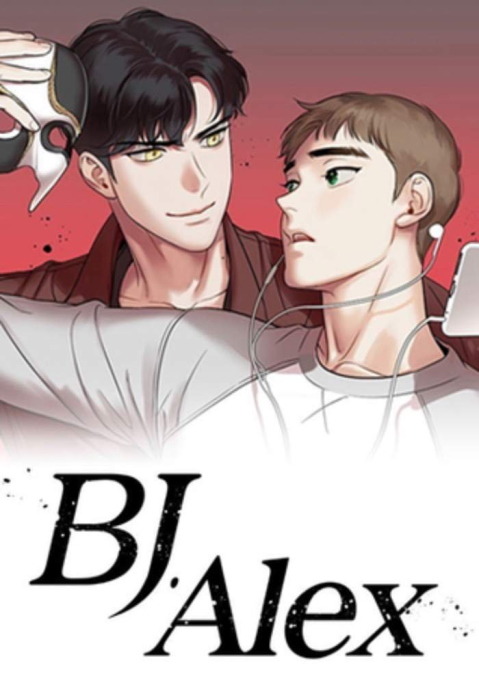
Dopo Killing Stalking e Blood Bank, arriva il nuovo BL targato Lezhin che ha fatto impazzire il mondo! Ogni sera alle 22.00, Dong Gyun si chiude nella sua stanza e guarda uno spettacolo di Cam Boy dal vivo condotto dal suo BJ (Broadcast Jokey) preferito: Alex. Alex, con indosso una maschera a proteggere la sua privacy, si spoglia in cambio di donazioni sfoggiando il suo fisico scultoreo e molto altro... causando tumulti nel cuore del timido Dong Gyun, che si ritrova vittima di un'inevitabile cotta per un ragazzo di cui non conosce né il volto, né l'identità. Una sera, Dong Gyun beve troppo a un ritrovo con i colleghi dell'università, e quando si risveglia, con lui c'è un bellissimo ragazzo senza maglietta che somiglia molto al suo Alex...
Uscita prevista: autunno
* NON VUOI PERDERTI NEANCHE UN POST? ENTRA NEL CANALE TELEGRAM! *

Autore: SilenziO))) - Twitter @s1lenzi0
[COMUNICATO STAMPA]
#kusuriya no hitorigoto#manga#mission yozakura family#bj alex#kaori no keisho#daisy jealousy#shadows house#le rose di versailles extra#yakeppachi no maria#86#eighty six#jpop manga#edizioni bd#newsintheshell#fumetti#twitch#news in the shell
4 notes
·
View notes
Text
Ramblings #4
Bentornati amici nella rubrica meno seguita di tutto Tumblr; sarà perché l’argomento è un po’ di nicchia? Sarà perché il suo creatore non è poi un granché nella scrittura? Sarà una combinazione di entrambe. Comunque l’estate sta rapidamente giungendo al termine e a me servono scuse per evitare/rimandare lo studio per cui eccoci al quarto episodio. Balziamo dal classicone della scorsa volta (Devilman) ad un altro mostro sacro dell’ambiente: Dragon Ball. Manga che ha contribuito, dopo la prima ondata di prodotti d’animazione giapponesi degli anni ‘70/’80 aka le innumerevoli serie su spazio e robottoni, a diffondere il medium in tutto il globo e a renderlo a tutti gli effetti un fenomeno di portata mondiale. E vogliamo poi parlare del fatto di averci insegnato la tecnica dell’onda energetica? Dai, si può dire di aver avuto veramente un’infanzia se non si è provato a farla almeno una volta? O nel mio caso, almeno un migliaio di volte?

#4
Titolo: Dragon Ball
Autore: Akira Toriyama
Periodo di pubblicazione: 1985-1995
Numero di volumi: 42
Premetto brevemente che questo articolo tratterà solamente l’opera originale, quindi verrà esclusa tutta la miriade di storie collaterali che si sono create nel tempo all’interno dell’universo narrativo di Dragon Ball (vedi ad esempio GT) e anche Super, nonostante poi alla sceneggiatura sia effettivamente tornato Toriyama stesso.
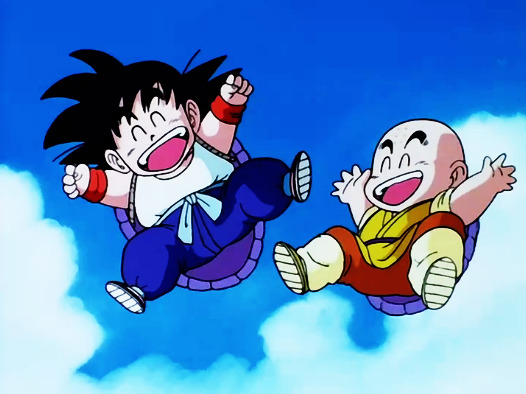
Mi sento un po’ scemo a parlare della trama di Dragon Ball. Però sono una persona rigorosa e che è felice solamente quando tutto segue il suo corso in maniera precisa, ordinata e secondo le categorie inizialmente prestabilite. Bene dunque, trama: la storia si sviluppa attorno alle avventure di un ragazzino di nome Goku, che vive con suo nonno in un’epoca fantastica a cavallo tra un futuro non troppo distante e ambientazioni temporali che invece riprendono la mitologia giapponese. Il ragazzo è ossessionato dall’idea di diventare più forte e si allenerà in varia maniera, sotto maestri di volta in volta differenti, per riuscire a sconfiggere nemici sempre più temibili e agguerriti. Ovviamente poi entrerà a far parte della narrazione un ampio cast di personaggi secondari che avranno il loro ruolo più o meno rilevante all’interno delle saghe e delle battaglie che si susseguiranno rapidamente una dietro all’altra. Per farla brevissima: c’è un cattivo, scontro, vittoria, c’è un cattivo più forte, scontro, vittoria, c’è un cattivo più forte… insomma dai avete capito.


Per la maggior parte di questo articolo lascerò parlare il giovanissimo e innocente Carlo di 8-10 anni che sfogliava estasiato le pagine della perfect edition del manga e al contempo si godeva le puntate del cartone (perché all’epoca non sapeva minimamente dell’esistenza della parola ‘anime’) con suo fratello appena tornava da scuola. Semplicemente per me è impossibile parlare di questa opera epocale in maniera obiettiva, perché è qualcosa con il quale sono cresciuto. Perché quando ripenso alla saga dei Saiyan o a quelle precedenti e successive rivedo le immagini di mia nonna che ci accoglieva per pranzo con un piatto fumante di pasta al pomodoro. Ricordo i compiti da fare a casa, i libri da leggere che sistematicamente non leggevo mai, mi viene in mente mio nonno che brontolava sentendo le cause di Forum e diceva “è tutto finto è, ma come si è ridotta la televisione italiana?” ed è in queste cose che trovo e ritrovo la bellezza dell’avventura con le sfere del drago; poi certo, i combattimenti, la morale, la volontà di fare sempre del bene a prescindere dal tuo passato, dalle tue radici, dal contesto a cui appartieni. Quanto mi emozionavo vedendo i personaggi che imparavano a volare o che scagliavano onde energetiche per la prima volta. Le battaglie con i nemici, che sembravano tutti così malvagi e dalla forza a dir poco insormontabile. Come era bello quando venivano sconfitti e si evocava Shenron per resuscitare chi sfortunatamente non ce l’aveva fatta. E vogliamo parlare per caso delle trasformazioni? Quando vidi per la prima volta Goku diventare Super Saiyan ero così emozionato che mi misi ad urlare e in seguito lo raccontai a mia mamma. E quando esplode Namek? Che non si sa se Goku sia sopravvissuto oppure no. Oddio, potrei continuare per ore ma penso abbiate chiaro il punto. Questo è ciò che vorrei maggiormente esprimere e far trasparire in tali righe: il trasporto, i sentimenti che mi suscitava e mi suscita tuttora quest’opera senza tempo. Paragonabile se vogliamo cambiare ambito a quello che sento quando parlo di, rileggo o riguardo Harry Potter. Troppo importante nel corso della mia vita per poter essere oggettivi per cui nada, i lati positivi di Dragon Ball: tutti i momenti che mi ha regalato tra pagine ed animazione.

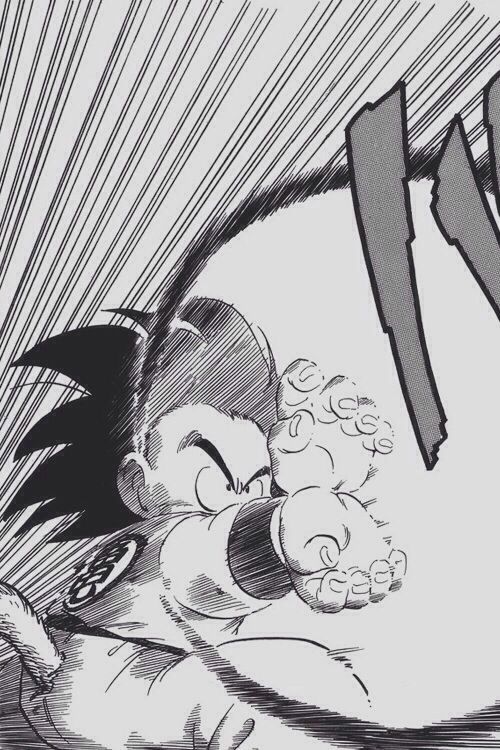
Sono rimasto bloccato per un po’ perché comunque come faccio a parlare dei difetti? Forse il fatto che di tanto in tanto Mediaset interrompeva la trasmissione delle puntate sul più bello e ricominciava da capo. Oppure che dovessi ogni volta aspettare un paio di mesi per il nuovo, sfavillante, rosso volumetto del manga. O non so, che in Budokai 3 per PS2 non potevo prendere come personaggio giocabile nonno Gohan o l’uomo invisibile e mi dicevo ma cazzo come è possibile escludere due pilastri del genere? Davvero non saprei che dirvi. L’unica cosa è che obiettivamente tutto il fascino che ha su di me il mare magno che è effettivamente Dragon Ball deriva dalla maniera con la quale ne sono entrato in contatto e dal periodo particolare in cui questo è successo. Se, in un universo alternativo, non ne avessi mai sentito parlare in vita mia e lo scoprissi oggi lo riterrei penso sicuramente carino ma di certo non ai livelli riportati qua sopra.
Episodio sui generis direi, ma avrei potuto parlare di Dragon Ball esclusivamente in questa maniera. Spero non vi sia dispiaciuto troppo. Come ultima postilla volevo dire che fino alla saga di Freezer compresa lo ritengo uno dei migliori shonen di tutti i tempi, ma questo è un pensiero che ho elaborato successivamente e dopo molte riletture e non vuole screditare in alcuna maniera i capitoli seguenti riguardanti Cell e Majin-Bu, entrambi a proprio modo soddisfacenti.
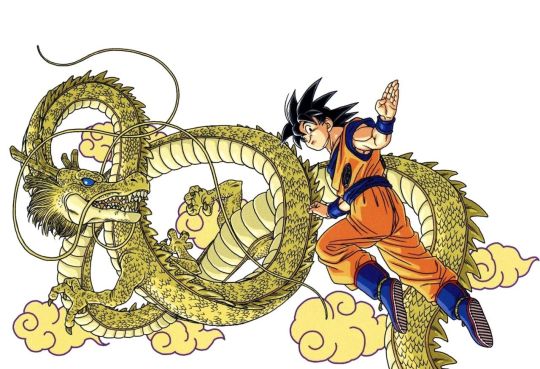
Pose preferite da provare con gli amici: quella della squadra Ginew e ovviamente la danza per la fusione.
Voto complessivo: Kame Hame Ha/10 (dai, serio per attimo: 9/10)
8 notes
·
View notes
Text



#kaze to ki no uta#keiko takemiya#gilbert cocteau#the poem of the wind and trees#takemiya keiko#la balada del viento y los arboles#serge battour#kazeki#manga#la balada del viento y los árboles#la balada del viento y los ?rboles#manga scans#manga art#70s manga#best of 70s 80s 90s#shonen ai
142 notes
·
View notes
Text
L’histoire du manga et son effet au Japon (2)
Suite à la popularisation du manga au Japon, il y est devenu omniprésent et le pays a profité de certains avantages. À la télévision ou au cinéma, on peut trouver des adaptions, des journeaux spécialisés ont vu le jour, et de nombreux produits dérivés sont proposés dans les magasins. En effet, l’économie du pays s’est beaucoup développé grâce aux ventes que ce soit juste au Japon ou dans le monde entier, qui ont donc engendré une augmentation du tourisme importante, toujours en hausse actuellement.
Le mot “manga” signifie d’abord “image dérisoire” son premier objectif n’était pas le même qu’aujourd’hui, c’était surtout des croquis sans but particulier. Mais ce mot prend un autre sens à partir du XXème siècle : la bande dessinée.
Les mangas sont donc commercialisés dans tout le Japon. On reconnaît différents types de mangas:
Les Kodomo : ce sont les mangas destinés aux enfants de moins de 10 ans, quelque soit leur genre; par exemple Doraemon
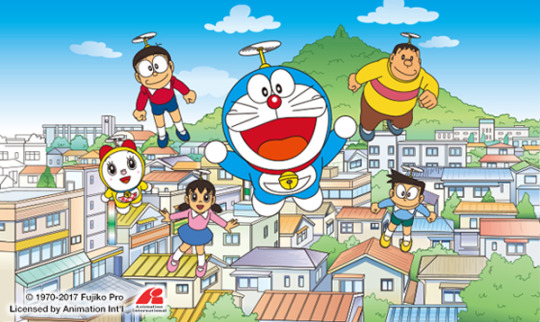
Les Shonen: ils sont destinés aux jeunes garçons de 8 à 18 ans; par exemple One Piece
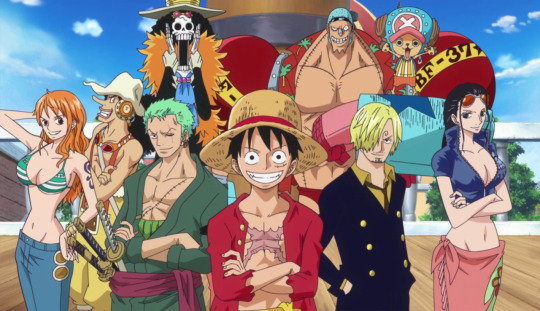
Les Shojo: pour les jeunes filles de 8 à 18 ans; par exemple Sailor Moon
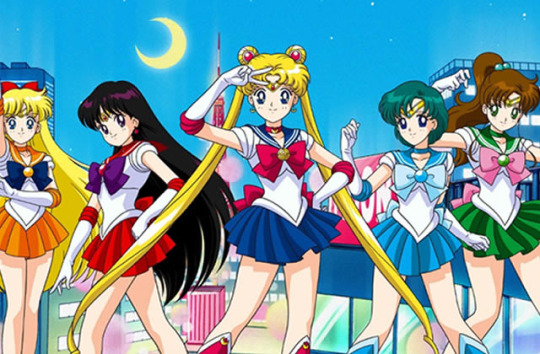
Les Seinen: destinés aux garçons à partir de 16 ans; par exemple Erased

Les Josei: destinés aux filles à partir de 16 ans; par exemple Black Bird
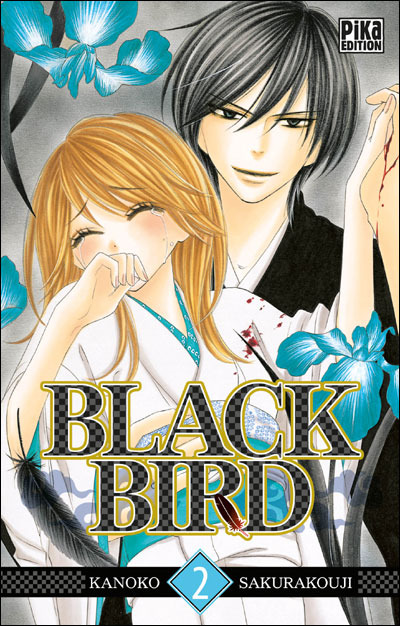
Les Seijin: à partir de 18 ans, quelque soit le genre
Néanmoins, les lecteurs font rarement attention à ces classifications et regardent simplement ce qui leur plaisent.
Peu importe leur type, ils peuvent avoir des thèmes différents: le sport, la cuisine, l’amour, la mort, les maladies, l’horreur, le lycée, les combats, la science-fiction etc... C’est très varié. On peut remarquer que les mangas les plus vendus comme Naruto, One Piece, Hunter X Hunter, Dragon Ball Z... sont tous des shonen.
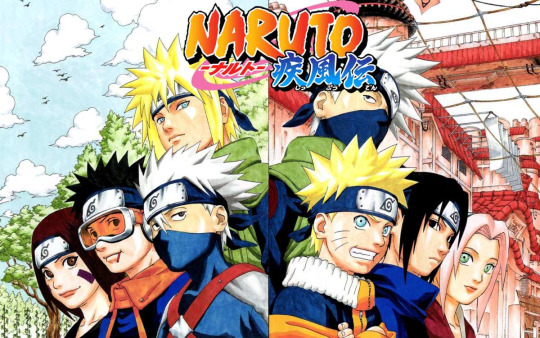
Avant d’être publié en livre, les chapitres de certains mangas sont d’abord publié dans des magazines de prépublication: par exemple, l’un des plus connus est le Weekly Shonen Jump, qui a publié et continue de publier des mangas notables comme Hunter x Hunter. S’ils ont suffisament de succès ils seront donc publié en format poche et souple que l’on retrouve donc dans les librairies.

Couvertures du Weekly Shonen Jump
Ils sont parfois même adapté en anime (dessin animé que l’on retrouve alors à la télévision et sur internet) ou en film live-action (un film adapté d’une bande dessinée, avec des acteurs).
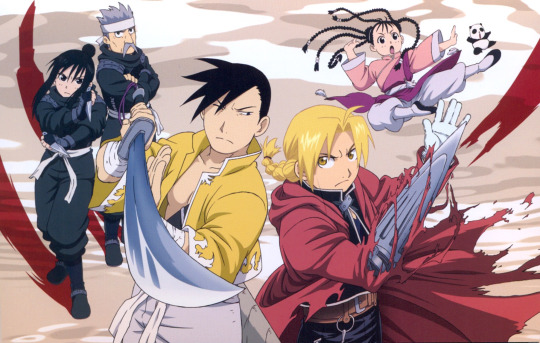
Animé FullMetal Alchemist:Brotherhood

Animé L’attaque des Titans
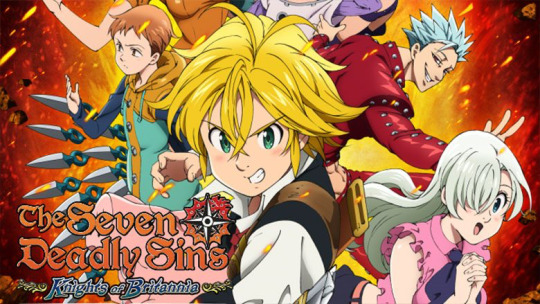
Animé Seven Deadly Sins
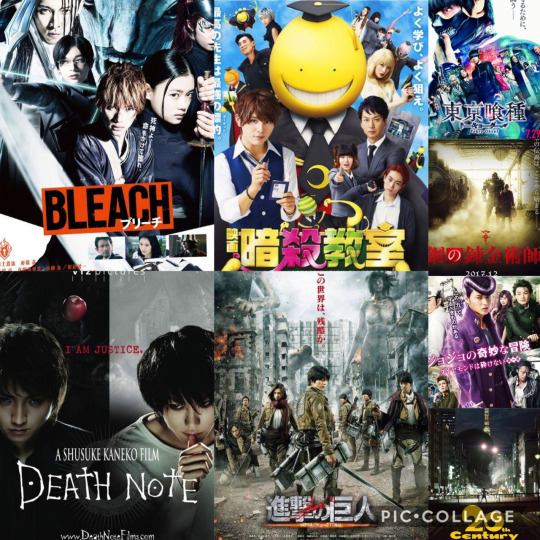
Affiches de films live action japonais; Bleach, Assassination Classroom, Tokyo Goul, Fullmetal Alchemist, Death Note, L’attaque des Titants, Jojo’s Bizarre Adventuyres, 20′s Century Boy
Les films live-action ne sont d’ailleurs pas forcément japonais : Netflix a adapté en 2017 le manga “Death Note”, et Philippe Lacheau, un réalisateur français, a adapté cette année “Nicky Larson”.

Adaptation américaine de Death Note

Adaptation américaine de Nicky Larson
Chacun d’entre nous a sûrement déjà regardé un anime japonais sans le savoir pendant son enfance, quelque soit son époque: Goldorak ou Astroboy à partir de la fin des années 70, Sailor Moon ou les Chevaliers du Zodiaque dans les années 90, Pokémon dans les années 2000 et plus récemment, Beyblade ou Yo-kai Watch.
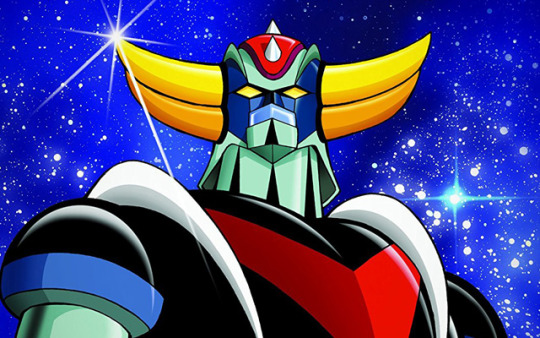
Goldorak

Pokémon
Cela a permis au Japon de faire rayonner sa culture internationalement et d’améliorer nettement son économie.
Il arrive parfois que des jeux vidéos soient adaptés en manga: c’est le cas de Pokémon.

Jeu 3DS Pokémon Soleil
A l’inverse, des manga sont adaptés en jeux vidéos.

Jeu PS3 Naruto Shippuden Ultimate Ninja Storm
De nombreux produits dérivés existent: des figurines, posters, porte-clé, vêtements...
Des musées sur les mangas existent également: le Musée international du Manga à Kyoto qui compte plus de 300 000 tomes, le Musée du manga Ishinori à Ishinomaki, mais pas seulement au Japon: le Musée Manggha en Pologne. Il se pourrait même qu’un musée sur le même thème voit le jour en Alsace d’ici quelques années!

Musée international du Manga à Kyoto
Mais les musées ne sont pas les seules infrastructures existantes: au Japon on peut trouver un parc à thème sur le manga One Piece ou sur l’univers des Studio Ghibli, ainsi que des boutiques consacrés à un seul manga: c’est le cas des Pokéstores au Japon qui vendent des produits dérivés comme par exemple les fameuses cartes Pokémon, des peluches ou les DVD.

Un pokéstore au Japon

Parc à thème de One Piece
0 notes